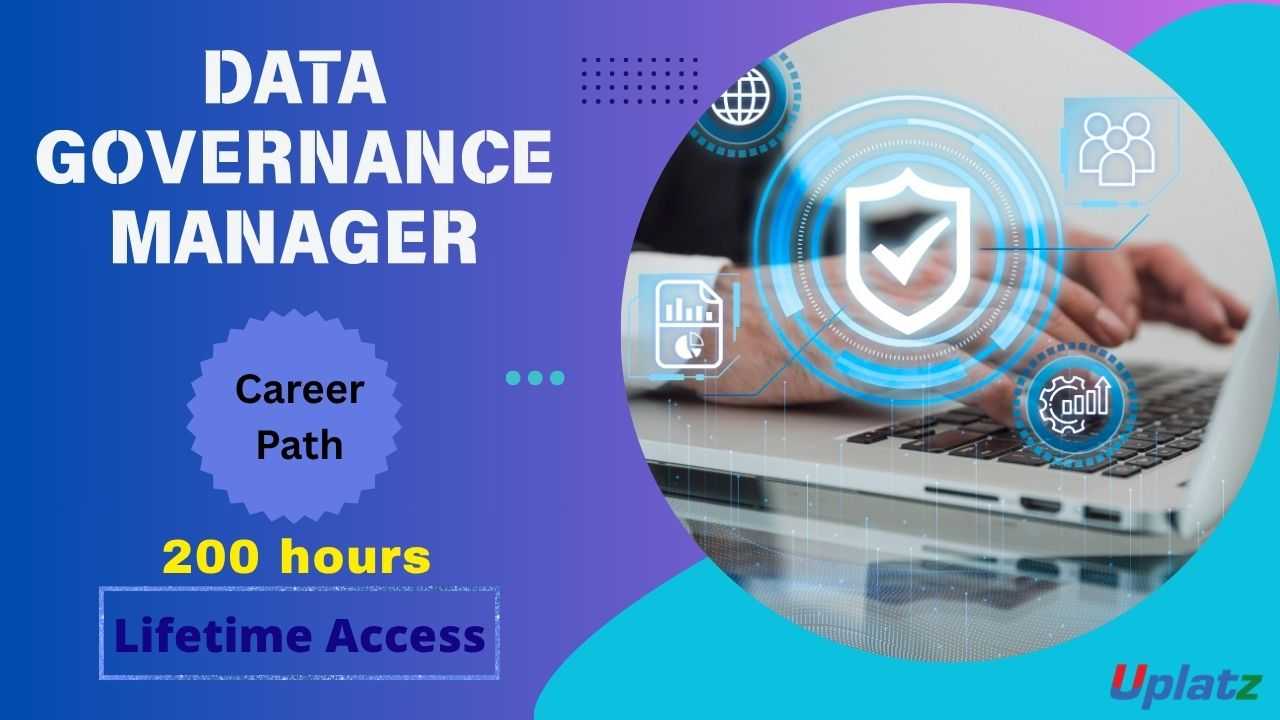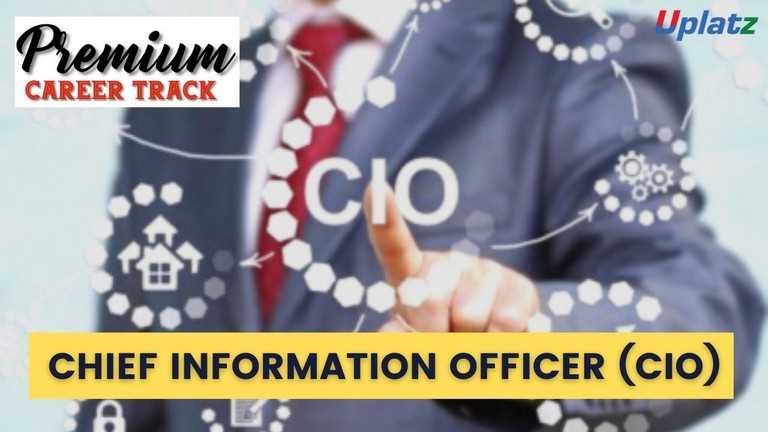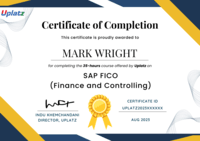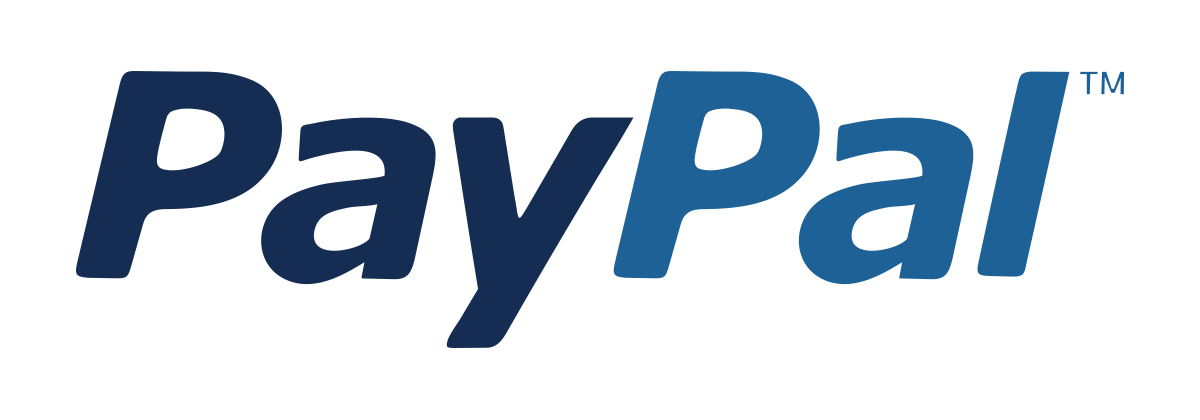Career Path - Cloud Security Engineer
Master skills to secure cloud infrastructure, detect threats, ensure compliance. Your complete guide to become a professional Cloud Security Engineer.Preview Career Path - Cloud Security Engineer course
Price Match Guarantee Full Lifetime Access Access on any Device Technical Support Secure Checkout Course Completion Certificate 91% Started a new career
BUY THIS COURSE (
91% Started a new career
BUY THIS COURSE (GBP 32 GBP 99 )-
 81% Got a pay increase and promotion
81% Got a pay increase and promotion
Students also bought -
-

- Career Path - Data Governance Manager
- 200 Hours
- GBP 32
- 940 Learners
-

- Amazon Web Services (AWS)
- 28 Hours
- GBP 12
- 820 Learners
-

- Premium Career Track - Chief Information Officer (CIO)
- 400 Hours
- GBP 39
- 1870 Learners

Cloud Security Engineer – Self-Paced Online Course
As organizations continue to shift their infrastructure, data, and operations to the cloud, securing these environments has become more critical than ever. The demand for professionals who can design and implement secure cloud architectures, mitigate risks, and ensure compliance with regulatory standards is growing rapidly across industries. This comprehensive self-paced course is designed to help you launch or advance your career as a Cloud Security Engineer by developing the specialized skills required to secure cloud environments across the three major platforms: Amazon Web Services (AWS), Microsoft Azure, and Google Cloud Platform (GCP).
Whether you're an aspiring cybersecurity professional, a cloud architect, a developer, or an IT administrator, this course provides an end-to-end roadmap to mastering cloud security. You will learn how to design secure cloud infrastructures, identify and mitigate vulnerabilities, protect sensitive data, and implement access control mechanisms that ensure only authorized users have access to critical resources.
The course starts with foundational concepts including the Shared Responsibility Model, which outlines the distribution of security responsibilities between the cloud provider and the customer. You’ll explore core concepts such as Identity and Access Management (IAM), encryption, secure networking, and logging. As you progress, the curriculum delves into advanced topics such as DevSecOps, Zero Trust Architecture, compliance frameworks, automated threat detection, and infrastructure as code (IaC) security using tools like Terraform, AWS CloudFormation, and Azure Bicep.
Hands-on labs and real-world projects are a key part of the learning experience. You’ll gain practical experience setting up secure cloud environments, managing encryption keys with AWS KMS and Azure Key Vault, configuring firewalls and Web Application Firewalls (WAFs), implementing VPNs and private endpoints, and setting up centralized logging and monitoring with tools like AWS CloudTrail, Azure Monitor, and GCP’s Security Command Center. These labs are designed to reinforce your understanding and ensure you're job-ready upon completion.
This course also prepares you for several high-value industry certifications that can significantly boost your career prospects. These include the AWS Certified Security – Specialty, Microsoft Certified: Azure Security Engineer Associate, Google Professional Cloud Security Engineer, CompTIA Security+, and the (ISC)² Certified Cloud Security Professional (CCSP). Each module is aligned with the skills required by these certifications and provides targeted preparation to help you succeed in your certification journey.
In addition to technical security controls, this course emphasizes security governance, risk management, and compliance (GRC). You'll explore how to design cloud architectures that meet the requirements of key compliance frameworks like GDPR, HIPAA, ISO/IEC 27001, PCI-DSS, and FedRAMP. You’ll also learn how to perform risk assessments, implement security baselines, and manage audits using automated tools.
DevSecOps plays a pivotal role in modern cloud security practices, and this course covers how to embed security across the software development lifecycle. You’ll learn how to integrate security checks into CI/CD pipelines, use static and dynamic application security testing tools (SAST/DAST), and scan infrastructure code for misconfigurations before deployment. These practices are essential for securing modern agile environments where infrastructure and applications are continuously updated.
Throughout the course, a focus is placed on real-world threat modeling and attack simulation. You’ll learn how to identify common cloud vulnerabilities—such as misconfigured storage buckets, exposed APIs, insecure identity configurations, and privilege escalation paths—and how attackers exploit them. More importantly, you’ll gain the skills needed to defend against such threats using a combination of preventive, detective, and corrective controls.
The course content is structured in a modular way, allowing you to learn at your own pace. Each module includes video lectures, guided tutorials, quizzes, hands-on exercises, downloadable resources, and scenario-based challenges that reflect what cloud security professionals encounter in real jobs. The training is designed to simulate enterprise-level cloud security projects, ensuring you gain experience that is both practical and highly applicable.
By the end of this course, you will have the confidence and competence to take on real-world roles as a Cloud Security Engineer, DevSecOps Specialist, SOC Analyst, or Cloud Security Architect. You’ll be equipped to work on securing hybrid and multi-cloud environments, architecting secure workloads, implementing automated defenses, and maintaining the confidentiality, integrity, and availability of cloud-native applications.
With lifetime access to the course content, regular updates aligned with the latest cloud security trends, expert mentor support, and access to a professional learning community, this course is your long-term learning partner in navigating the dynamic and rewarding career path of cloud security engineering.
Whether you aim to strengthen your current role, transition into cloud security, or pursue elite industry certifications, this course provides a thorough, hands-on, and career-focused path to success in the evolving world of cloud security.
Course/Topic 1 - Microsoft Azure Fundamentals - all lectures
-
In this lecture session we learn about microsoft azure course introduction and also talk about overview of microsoft azure.
-
In this lecture session we learn about azure basics functions and importance of microsoft azure.
-
In this lecture session we learn about microsoft azure features and also talk about functions of microsoft azure in brief.
-
In this lecture session we learn about microsoft azure glossary and also talk about features of azure glossary in microsoft azure fundamentals.
-
In this lecture session we learn about Microsoft azure certification path in microsoft azure fundamentals and also talk about features of certification path.
-
In this lecture session we learn about azure certification path and also talk about features of microsoft azure in brief.
-
In this lecture session we learn about the fundamentals of cloud computing and also talk about the features of cloud.
-
In this lecture session we learn about cloud computing functions and also talk about the importance of cloud computing in brief.
-
In this lecture session we learn about cloud computing terms and conditions and also talk about features of terms and computing of cloud computing.
-
In this lecture session we learn about amazon web service and azure and also talk about the basic difference between amazon web service and microsoft azure.
-
In this lecture session we learn about we learn about Getting started with microsoft azure and also talk about features and basic overview of Azure.
-
In this lecture session we learn about the advantages of Azure and also talk about the importance of Microsoft azure.
-
In this lecture session we learn about the basic advantage of Azure in microsoft fundamentals.
-
In this lecture session we learn about features of microsoft azure and also talk about functions of microsoft azure.
-
In this lecture session we learn about the advantages of microsoft azure and also talk about factors of microsoft azure.
-
In this lecture session we learn about career in microsoft azure and also career in microsoft azure in brief.
-
In this lecture session we learn about Microsoft Azure IOT and also talk about features of Azure IOT in brief.
-
In this lecture session we learn about fundamentals of azure components in microsoft components and also talk about features of azure components.
-
In this lecture session we learn about microsoft azure storage architecture and also talk about functions of azure storage architecture in microsoft azure.
-
In this lecture session we learn about microsoft azure table storage and also talk about features of azure table storage.
-
In this lecture session we learn about azure blob storage and also talk about the importance of microsoft azure blob storage.
-
In this lecture session we learn about the advantages of blob storage and also talk about all advantages of blob storage.
-
In this lecture session we learn about microsoft azure Queue storage in azure and also talk about features of azure Queue storage in microsoft azure.
-
In this lecture session we learn about azure virtual machines in microsoft azure and also talk about the importance of virtual machines.
-
In this lecture session we learn about azure mobile app service and also talk about how we develop mobile app services.
-
In this lecture session we learn about azure event grid and also talk about features of microsoft azure event grid.
-
In this lecture session we learn about microsoft azure backup service in azure cloud and also talk about the importance of microsoft azure backup services.
-
In this lecture session we learn about azure event hub and also talk about features of microsoft azure event hub.
-
In this lecture session we learn about azure quickstart templates in fundamentals of microsoft azure and also talk about the importance of azure quickstart template.
-
In this lecture session we learn about azure API app service in microsoft azure and also talk about functions of azure API app service.
-
In this lecture session we learn about azure cloud services and also talk about azure cloud services
-
In this lecture session we learn about azure SQL database configuration and also talk about SQL database features.
-
In this lecture session we learn about Microsoft Azure devOps and also talk about the importance of azure devOps.
-
In this lecture session we learn about azure express route and also talk about microsoft azure express route.
-
In this lecture session we learn about Microsoft Azure SQL database in microsoft azure and also talk about features of SQL.
-
In this lecture session we learn about microsoft azure key vault in microsoft azure and also talk about key vaults in azure.
-
In this lecture session we learn about microsoft azure load balancer in microsoft azure and also talk about azure load balancer.
-
In this lecture session we learn about azure CDN in microsoft azure fundamentals and also talk about azure CDN.
-
In this lecture session we learn about Microsoft Azure cosmos DB in cloud computing and also talk about features of cloud computing.
-
In this lecture session we learn about fundamentals of microsoft azure domain in azure and also talk about the importance of azure domains.
-
In this lecture session we learn about legacy application modernization and also talk about features of legacy application modernization.
-
In this lecture session we learn about microsoft azure portals and also talk about all portals of microsoft azure.
-
In this lecture session we learn about microsoft azure services portal and also talk about features of azure all services.
-
In this lecture session we learn about what is the best model in microsoft azure and also talk about best models for enterprise.
-
In this lecture session we learn about microsoft azure deep dive and also talk about features of microsoft azure deep dive.
-
In this lecture session we learn about azure management portal in microsoft azure management function and factors.
-
In this lecture session we learn about subscription and billing and also function importance subscription and billing.
-
In this lecture session we learn about azure storage services and also talk about functions of azure storage services.
-
In this lecture session we learn about creating and configuring azure storage accounts and also talk about functions of creating azure storage accounts.
-
In this lecture session we learn about microsoft azure storage account in fundamentals of azure portals.
-
In this lecture session we learn about Microsoft Azure Storage account and also talk about features of azure storage.
-
In this lecture session we learn about microsoft azure websites and services in azure and also talk about basics of websites and services.
-
In this lecture session we learn about factors of websites and services in microsoft azure.
-
In this lecture session we learn about validation warnings in microsoft azure.
-
In this lecture session we learn about how to develop azure websites and services and also talk about functions of websites and services.
-
In this lecture session we learn about what is services protections and DDos protections in microsoft azure.
-
In this lecture session we learn about network interface and also talk about functions of network interface.
-
In this lecture session we learn about microsoft azure Vnet connectivity and also talk about features of peeing and global peeing.
-
In this lecture session we learn about microsoft azure compute services and also talk about functions of features of compute services.
-
In this lecture session we learn about creating virtual machines and also talk about functions of creating virtual machines.
-
In this lecture session we learn about creating an availability set in Microsoft Azure and also talk about factors of creating an availability set.
-
In this lecture session we learn about scaling microsoft azure virtual machines and also talk about functions of scaling azure virtual machines.
-
In this lecture session we learn about azure app services and also talk about how we create microsoft azure app services.
-
In this lecture session we learn about creating a web application and deploying it and also talk about features of deploying.
-
In this lecture session we learn about features of creating a web application and deploying in microsoft azure.
-
In this lecture session we learn about microsoft azure mobile app services and also talk about features of mobile app services.
-
In this lecture session we learn about microsoft azure notification hub and mobile engagement.
-
In this lecture session we learn about microsoft azure functions apps and also talk about features of azure functions apps.
-
In this lecture session we learn about microsoft azure functions and also talk about functions of microsoft azure functions.
-
In this lecture session we learn about microsoft azure API app and API management and also talk about functions of API management in microsoft azure.
-
In this lecture session we learn about creating an API using azure portal and also talk about features creating an azure portal.
-
In this lecture session we learn about Azure API app services details and also talk about features of API app services.
-
In this lecture session we learn about microsoft azure database services and also talk about features of database services.
-
In this lecture session we learn about Microsoft Azure SQL database and also talk about features of SQL database.
-
In this lecture session we learn about Microsoft Azure SQL database configuration and also talk about features of SQL database.
-
In this lecture session we learn about global distribution and partitioning and also talk about features of global distributions.
-
In this lecture session we learn about Microsoft Azure SQL data warehouse and also talk about functions of azure SQL data warehouse.
-
In this lecture session we learn about cloud computing importance and also talk about functions of cloud computing importance.
-
In this lecture session we learn about microsoft azure certification path and also talk about features of azure certification path.
Course/Topic 2 - Linux System Administration - all lectures
-
In this session we will discuss basic system administrative topics. This video talks about the user management (who, whoami, groups, su, adduser, deluser, useradd, userdel, id, usermod, users) and time management (time, uptime) in Linux.
-
In this session we will discuss Run Levels and Root Privileges. This video talks about te init levels along with shutdown (init, shutdown, halt, systemctl) and accessing administrator (root) privileges.
-
In this session we will discuss talks about the package management in Linux system. This video talks about the package management using apt, apt-gel, apt-cache, dpkg.
-
In this session we will discuss about the important topics of networking in Linux System. This video talks about the networking by explaining hostname, ifconfig, ping, host dig, nslookup, route, traceroute.
-
In this session we will discuss about the important topics of networking in Linux System. This video talks about the networking by explaining tracepath, netstat, arp, ftp, sttp, scp, wget, telnet, ssh.
-
In this session we will discuss file system and devices in linux system. This video talks about the how in linux everything is a file and how a device represents as a file. Further we will see about sda as a block device type special file.
This course is designed to equip learners with the comprehensive skills and practical experience needed to thrive as a Cloud Security Engineer in today’s hybrid and multi-cloud environments. By combining foundational knowledge with advanced technical training, the course ensures participants are prepared to design secure architectures, enforce identity policies, manage encryption, respond to threats, and implement compliance controls across AWS, Azure, and Google Cloud. The learning objectives span across domains such as cloud infrastructure, DevSecOps, vulnerability management, and automated monitoring—giving learners a 360-degree view of how to protect modern cloud ecosystems effectively.
By the end of this course, learners will be able to:
-
Understand core cloud security principles and the shared responsibility model
-
Configure IAM policies, roles, and multi-factor authentication (MFA)
-
Design secure cloud architectures using AWS, Azure, and GCP
-
Use encryption for data at rest and in transit with cloud-native tools
-
Implement firewall rules, WAFs, VPNs, and private endpoints
-
Detect and respond to incidents using cloud-native SIEM solutions
-
Automate security with DevSecOps practices and infrastructure-as-code (IaC)
-
Ensure compliance with industry and government regulations
-
Analyze vulnerabilities and secure cloud-native applications
-
Monitor, log, and audit activity across multi-cloud environments
-
Understand core cloud security principles and the shared responsibility model.
Cloud Security Engineer – Course Syllabus
Module 1: Introduction to Cloud Security
-
What is Cloud Security?
-
Importance of Cloud Security in Modern IT
-
Shared Responsibility Model (AWS, Azure, GCP)
-
Core Security Principles: CIA Triad, Zero Trust
-
Introduction to Cloud Security Certifications (AWS, Azure, GCP, CCSP)
Module 2: Identity & Access Management (IAM)
-
IAM Fundamentals and Best Practices
-
IAM in AWS: Users, Roles, Policies, STS
-
IAM in Azure: RBAC, Azure AD, Conditional Access
-
IAM in GCP: IAM Policies, Roles, and Permissions
-
Multi-Factor Authentication (MFA) and Federation
-
Least Privilege & Role-Based Access Control (RBAC)
Module 3: Securing Cloud Infrastructure
-
Network Security Fundamentals
-
Virtual Private Cloud (VPC) / VNets / Subnets
-
Security Groups, Network ACLs, and Routing
-
Firewalls and Web Application Firewalls (WAFs)
-
Load Balancers and SSL/TLS Configuration
-
VPNs and Hybrid Network Connectivity (AWS VPN, Azure VPN Gateway)
Module 4: Data Protection and Encryption
-
Data Classification in the Cloud
-
Encryption at Rest and In Transit
-
Key Management Services: AWS KMS, Azure Key Vault, GCP Cloud KMS
-
BYOK (Bring Your Own Key) and HSM Integration
-
Tokenization and Masking
-
Secure Storage: S3, Blob, GCS Access Control
Module 5: Monitoring, Logging & Auditing
-
Importance of Logging and Continuous Monitoring
-
AWS CloudTrail, CloudWatch, and GuardDuty
-
Azure Monitor, Log Analytics, and Defender for Cloud
-
GCP Logging and Security Command Center
-
Centralized Logging and Cross-Account Access
-
Alerts, Dashboards, and Notification Services
Module 6: Threat Detection & Incident Response
-
Cloud Threat Models and Attack Surfaces
-
Common Attacks: Misconfigurations, Exposed Keys, Data Breaches
-
Intrusion Detection and Prevention Systems (IDPS)
-
Automating Threat Detection with AI/ML Tools
-
Incident Response Plans and Playbooks
-
Forensics and Root Cause Analysis in Cloud
Module 7: DevSecOps and Secure CI/CD
-
DevSecOps Principles and Shift-Left Security
-
CI/CD Pipeline Overview and Security Integration
-
SAST, DAST, and Dependency Scanning
-
Securing Containers and Kubernetes (EKS, AKS, GKE)
-
IaC Security: Terraform, CloudFormation, Bicep, ARM Templates
-
Secrets Management in CI/CD
Module 8: Compliance and Risk Management
-
Key Regulatory Frameworks: GDPR, HIPAA, PCI-DSS, ISO 27001
-
Compliance Tools and Services (AWS Config, Azure Policy, GCP Organization Policy)
-
Risk Assessment and Management
-
Security Benchmarks: CIS, NIST, CSA
-
Cloud Security Posture Management (CSPM)
-
Auditing and Documentation Best Practices
Module 9: Multi-Cloud and Hybrid Security Strategies
-
Challenges of Multi-Cloud Environments
-
Unified Security Management and Monitoring
-
Centralized IAM, Logging, and SIEM Integration
-
Cloud-Native vs. Vendor-Agnostic Tools
-
Designing Secure Cross-Cloud Architectures
-
Identity Federation and Single Sign-On (SSO)
Module 10: Capstone Project and Certification Preparation
-
End-to-End Cloud Security Project (AWS or Azure)
-
Scenario-Based Attack Simulation and Defense
-
Security Controls Mapping to Business Objectives
-
Mock Exam Questions (AWS, Azure, GCP Security Certifications)
-
Portfolio Building and Career Guidance
-
Resume, LinkedIn, and Job Interview Preparation
Upon successful completion of the Cloud Security Engineer course, learners will receive a Course Completion Certificate from Uplatz. This validates your hands-on expertise in cloud security, including policy configuration, threat detection, automation, and compliance.
This certificate is a valuable asset for anyone pursuing advanced certifications or seeking a career in cybersecurity or cloud infrastructure. Add it to your portfolio, resume, or LinkedIn profile to demonstrate your readiness for cloud security roles.
Cloud Security Engineers are highly sought after as businesses move sensitive workloads to the cloud. Skilled professionals who can protect cloud environments from internal and external threats are essential across industries.
Career roles include:
-
Cloud Security Engineer
-
Cloud Security Analyst
-
DevSecOps Engineer
-
Cybersecurity Consultant
-
Cloud Security Architect
-
Security Operations Center (SOC) Analyst
-
Compliance & Risk Analyst
Industries hiring cloud security talent include finance, healthcare, retail, government, energy, SaaS companies, and consulting firms. Leading employers include Amazon, Microsoft, Google, IBM, Deloitte, PwC, Accenture, and top startups.
With increasing experience, professionals can grow into roles such as Chief Information Security Officer (CISO), Cloud Security Architect, or Head of DevSecOps.
-
What is the shared responsibility model in cloud security?
It defines the responsibilities of cloud providers and customers. Providers secure the infrastructure; customers secure their data and access controls. -
How do you secure data in the cloud?
Through encryption (in transit and at rest), key management, access controls, and regular audits. -
What is IAM and why is it important?
IAM (Identity and Access Management) ensures that only authorized users and services access specific resources. -
What tools are used for cloud security monitoring?
AWS CloudTrail, Azure Monitor, GCP Security Command Center, and third-party SIEMs like Splunk or Datadog. -
What is DevSecOps?
An approach that integrates security practices into the DevOps process, ensuring secure coding, scanning, and compliance from development through deployment. -
What is a WAF and how does it work?
A Web Application Firewall (WAF) filters and monitors HTTP traffic to prevent attacks like SQL injection and cross-site scripting (XSS). -
How do you prevent misconfigurations in the cloud?
By using IaC tools, security scanning (e.g., tfsec, Checkov), and enforcing policies with tools like AWS Config or Azure Policy. -
What are some common cloud threats?
Data breaches, insider threats, insecure APIs, misconfigurations, and account hijacking. -
How do you handle compliance in the cloud?
By aligning with standards (e.g., GDPR, HIPAA), using automated tools for audits, and applying security baselines. -
What’s the role of encryption keys in cloud security?
They are used to encrypt/decrypt data; their management and rotation are critical to prevent unauthorized access.









